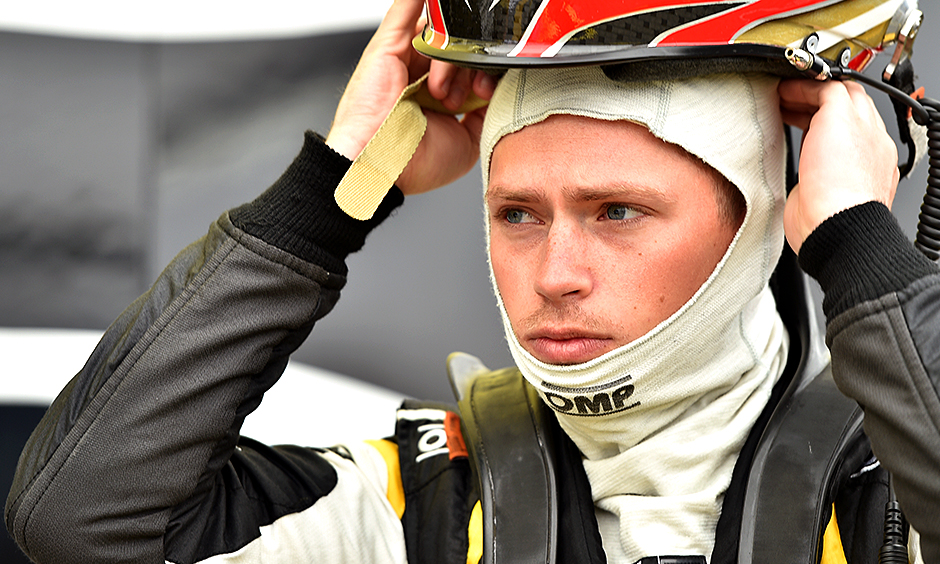Oval clinic helps Mazda Road to Indy drivers prepare for going in circles this week
MAY 25, 2016
INDIANAPOLIS -- Just as the Verizon IndyCar Series drivers changed gears from road course to oval competition for the 100th Running of the Indianapolis 500 presented by PennGrade Motor Oil, the competitors in all three levels of the Mazda Road to Indy are switching to oval mode this week.
Indy Lights presented by Cooper Tires will showcase its drivers Friday in its crown jewel event, the Freedom 100 on the same Indianapolis Motor Speedway’s 2.5-mile oval where the Indy 500 takes place two days later.
Meanwhile, the Pro Mazda Championship presented by Cooper Tires and the Cooper Tires USF2000 Championship powered by Mazda head to nearby Lucas Oil Raceway for the Carb Night classic on the 0.686-mile oval the same night.
Oval racing presents a unique challenge for many MRTI drivers who haven’t experienced it before. With the Carb Night Classic the first of two Pro Mazda events on the 2016 schedule and the only USF2000 oval race this season, MRTI assists its young drivers by hosting an Indy oval clinic each May.
“We understand that most of these drivers that are in the Mazda Road to Indy come from a road racing background,” said Dan Andersen, CEO of Andersen Promotions that operates all three INDYCAR-sanctioned stepladder series. “When they get to the USF2000 level, it is usually their first oval experience. We understand how different ovals are (to road and street courses) and we certainly want them to be safe and to advance their careers as much as possible.”
The oval clinic features a panel of former and current Verizon IndyCar Series drivers who share their oval racing expertise to the young drivers. This year’s panel featured four-time Verizon IndyCar Series champion Dario Franchitti; 2016 Indianapolis 500 pole sitter James Hinchcliffe; Brian Barnhart, INDYCAR vice president of competition, race control; and John Doonan, director of Mazda Motorsports.
Hinchcliffe and Franchitti discussed various aspects of oval race craft, such as developing the proper racing line, passing, drafting, working with spotters, how to handle restarts and how to handle themselves in the event of an accident.
Hinchcliffe used his own experience to convey to the drivers that, while racing on an oval is challenging, it is one of the most enjoyable things a driver can do in a race car.
“When I first raced on ovals in 2009 in (Indy) Lights, I hated them,” said Hinchcliffe, now a driver for Schmidt Peterson Motorsports in the Verizon IndyCar Series. “Over time and as I raced on them more, I came to love them and now it is the most fun that I have in an Indy car.”
Pabst Racing driver Yufeng Luo found the oval clinic helpful as he works through his second season of USF2000 competition.
“The things that these drivers say, it sticks in your head, especially with the experience that they have,” Luo said.
Aaron Telitz (pictured above) is in his third year in the MRTI ladder and first in Pro Mazda after two seasons in USF2000. The Team Pelfrey driver has been to the oval clinic all three years and still finds it beneficial.
“This is my third year on ovals; I’m no longer a rookie on them but I’m still learning and trying to figure them out,” said Telitz, the 24-year-old from Wisconsin. “It takes a lot of years to get as knowledgeable as Dario and Hinch are.”
The Freedom 100 schedule calls for practice and qualifying Thursday at IMS. The race is scheduled for 12:30 p.m. ET Friday and will air live during NBCSN’s Miller Lite Carb Day coverage. In testing on Monday, Zach Veach ran an unofficial lap of more then 201 mph, the first Indy Lights driver to break the 200 barrier at IMS. Official track records can only set in qualifying and the race.
Pro Mazda and USF2000 will conduct practice sessions throughout the day Thursday at Lucas Oil Raceway. Both series will qualify in late afternoon Friday with the USF2000 race set to start at 6:10 p.m. ET Friday and the Pro Mazda race to follow at 7:10 p.m.
















